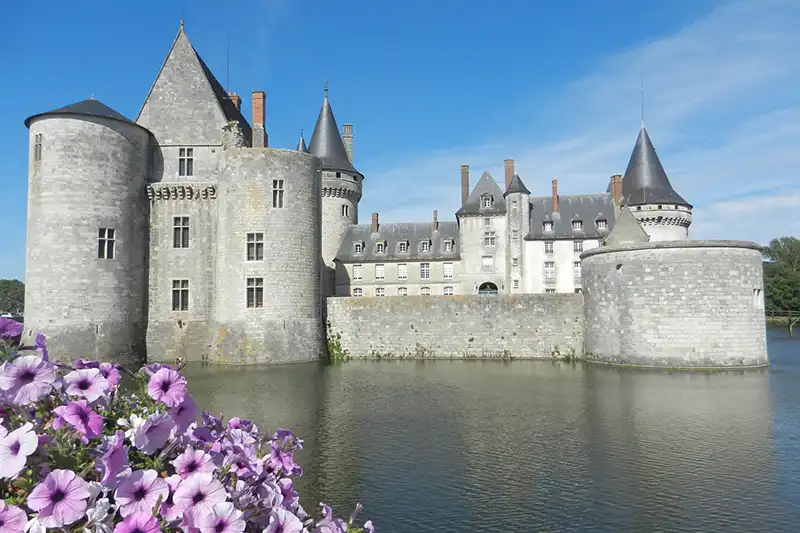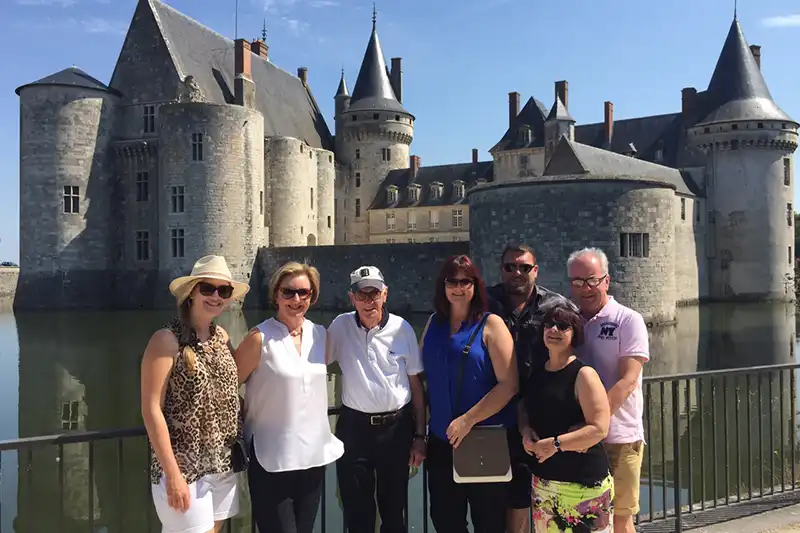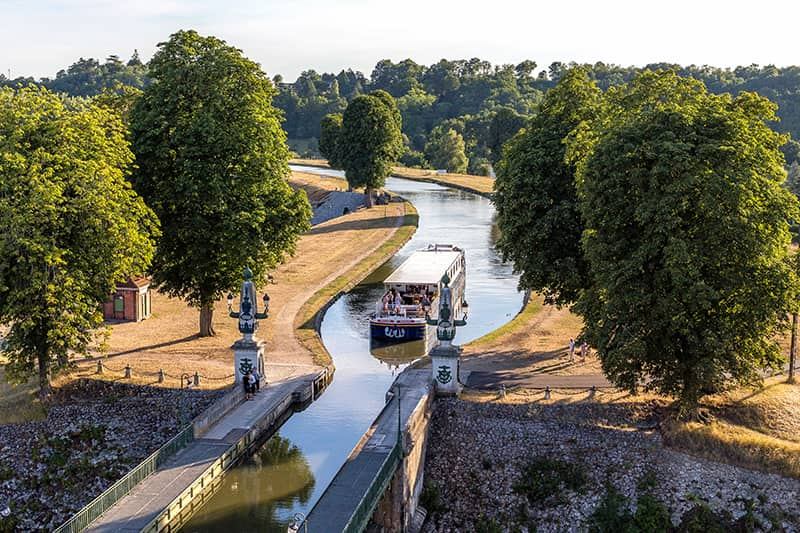Château de Sully-sur-Loire: An Historic Fairytale Fortress for All the Family
Some of France’s most famous historic figures, as well as popular fairy-tales such as Beauty and the Beast and The Hunchback of Notre Dame, were linked with the romantic environs of France. On our Family Cruise aboard hotel barge Renaissance, little ones will be thrilled to visit a real-life fairytale fortress – the Château de Sully-sur-Loire – while the grown-ups will discover its connection with ‘The Maid of Orleans’, Joan of Arc.

An Enchanting Château
The towers and turrets of this fabulous medieval fortress are an enchanting sight for whoever beholds it, whatever their age. The château (which means castle in French) was built at the end of the fourteenth century, at the gateway to the Loire Valley. It is surrounded by wide moats filled by water from the Sange River, which makes its huge keep loom, grand and imposing, above you as you enter.
Inside, the castle is no less impressive. The chestnut roof of the keep is one of the finest examples of its kind in the region, and the masterful carpentry of the garrets is the work of the best craftsmen in Orléans. There is a wall walk that allows you to see through the machicolations, those crenulated tops of the walls that were used for throwing objects down on marauders below. Quite the fierce fortress!
Location, Location, Location
Château de Sully-sur-Loire is a château-fort, a true castle. It was designed to protect its owners as well as those who work there. Not just a breathtaking façade, it was built at a natural ford in the River Loire, with strong fortifications to maintain control of the crossing. This was the gateway between Burgundy and Paris, with the River Loire acting as a highway in the day. Before trains and cars there were barges and other floating craft that transported commercial goods and construction materials by water.
The Loire Valley is actually a UNESCO World Heritage site, an area of natural beauty as well as historically rich in culture (and castles). The river provides irrigation to this day with many ditches, dykes and channels to manage the flow, including around this fairytale fortress.
Joan of Arc
The château was originally owned by Georges de la Trémoille. He built the keep we see today in 1395, and then the more comfortable and splendid living quarters in 1430. It was also during this time that Joan of Arc met de la Trémoille. He angered Joan of Arc by encouraging the Dauphin to devote himself to idle hunting in the nearby forests.
When Joan failed to liberate Paris in 1430, de la Trémoille, who supported the English King, imprisoned her in the castle. She escaped later to continue her campaign, but was captured by the Burgundians and sold to the English. Her long trial in 1431 culminated in a martyr’s death by burning at the stake in Rouen.

The Duke of Sully
Later, in the sixteenth century this fantastic fortress became the seat of its most well-known owner, the first Duke of Sully, who was grand minister to King Henri IV. He played a key part in revitalising France after the religious wars, particularly by assisting in stablising its economy.
He was also known for his encouragement of the movement of agricultural goods, and building infrastructure such as roads, bridges and planning canal systems. This included the building of the Canal de Briare, connecting the Rhone and Seine valleys.
For the next four centuries the Sully family called the castle their home, welcoming guests such as Mazarin and Anne of Austria, who fled there during the insurrection in 1652, and Voltaire in the 1710s, following his exile from Paris.
D-Day
During the 1900s, the château managed to survive floods, fires and even war. Whilst World War One did not impact heavily on this fortress, World War Two brought war closer to home. In 1940, the bridge crossing the River Loire was blown up to hinder advancing armies. In consequence, the château was shelled and sustained damage.
It was then occupied until 1944, during which most of the furnishings disappeared. But, as part of D-Day, advancing British forces on their way to Bayeux, liberated it. In consequence, the Chateau was once again damaged by intense shelling.
Visiting Today
The castle was purchased from the Sully family in 1962 by the Loiret Council, who undertook a series of extensive renovations. This included many years of finding and re-furnishing rooms for visitors to enjoy, taking the opportunity to showcase the castle’s life from different points in its timeline. More recently, these renovations included even the riverbank and the park moats.
The castle sits in over 25 hectares of land, much of which is parkland, lakes and forest that can be enjoyed by all the family. And this historic monument now hosts events, exhibitions and concerts throughout the year, including an annual classical music festival in June.

Family Fun
A visit to the Chateau de Sully-sur-Loire aboard hotel barge Renaissance makes a perfect option for a Family Cruise itinerary with kids of all ages. Fancy a treasure hunt? There’s an opportunity to view the castle from a different perspective, by searching for ornaments dotted throughout the castle. You can download their app or use smartphones available on site, giving a very different, child friendly perspective to this already unique castle.
Younger children can also delight in a special tour activity booklet just for them. It contains drawings they can colour in, even riddles, that help them interpret this amazing fairytale fortress in their own way.
Whether you’re young or old, it is impossible not to fall in love with this ‘monument historique’, the Château de Sully-sur-Loire is a truly special castle.

 English
English
 Spanish
Spanish French
French German
German Norwegian
Norwegian Portuguese
Portuguese Swedish
Swedish Italian
Italian Russian
Russian Simplified Chinese
Simplified Chinese Japanese
Japanese